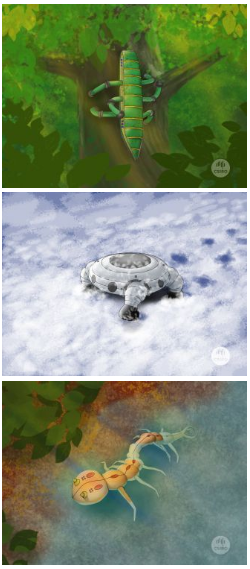CSIRO spells out evolved robotics
 CSIRO experts have offered a bold glimpse into what the robots of the future could look like.
CSIRO experts have offered a bold glimpse into what the robots of the future could look like.
In a new paper in Nature Machine Intelligence, CSIRO’s Active Integrated Matter Future Science Platform (AIM FSP) says robots could soon be taking their engineering cues from evolution, creating truly startling and effective designs.
This concept, known as Multi-Level Evolution (MLE), argues that current robots struggle in unstructured, complex environments because they are not specialised enough.
Instead, it suggests they should emulate the incredibly diverse adaptation animals have undergone to survive in their environment.
“Evolution doesn’t care what something looks like,” says the paper’s lead author, Dr David Howard.
“It searches a much wider design space and comes up with effective solutions that wouldn’t be immediately obvious to a human designer.
“An animal like a manta ray or a kangaroo may look unusual to human eyes, but is perfectly calibrated for its environment.”
The paper argues that within just 20 years cutting edge technologies like high-throughput materials discovery and characterisation, advanced manufacturing and artificial intelligence could allow robots to be designed from the molecular level up to perform their mission in extremely challenging circumstances.
Algorithms based on natural evolution would automatically designs robots by combining a variety of materials, components, sensors and behaviours.
Advanced, computer-based modelling could then rapidly test prototypes in simulated, “real world” scenarios to decide which works best.
The end result would be simple, small, highly integrated, highly specialised, and highly cost-effective robots precision engineered for their task, environment, and terrain.
One example would be a robot designed for basic environmental monitoring in extreme environments. It would need to traverse difficult terrain, gather data, and eventually fully degrade so as to not pollute the environment.
MLE’s approach to designing the robot would entirely depend on the terrain, climate and other factors.
A robot designed for work in the Sahara Desert would have to use materials that can survive punishing heat, sand and dust. It could be solar powered, slide across sand dunes, and use the harsh UV light as a trigger to eventually degrade.
The thick, low lying vegetation of the Amazon would be an entirely different challenge. A robot designed for this environment could crawl around trees and over fallen logs, be powered by biomass such as the plant matter covering the jungle floor, and degrade with humidity.
In both cases, MLE would automatically select the appropriate materials and components into a high-performing robot design, based on how well the robot performs a given task.
CSIRO says it is an infinitely more scalable process than current approaches that require teams of engineers to design just one robot.







 Print
Print